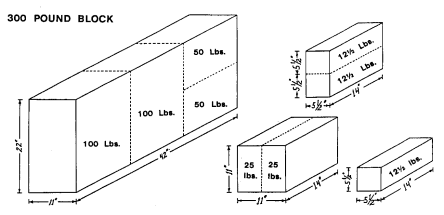Most retail outlets shave snow from an ice block that is in a melting state. The quality of the snow is that of real snow.
All machines that use cube ice or that spins a block of ice should use ice in a melting state.
The Southern Snow® machine will produce a powder ice similar to freshly fallen snow if the block of ice is taken from a
freezer set at 0° F. Syrup will collapse this snow as much as 50% on contact. Thus, the snow will need to be packed with a
funnel or additional ice and syrup may need to be added twice to complete one shaved ice product.
Snow made from ice in a melting state is firm and can be packed into a hard ball that syrup will not penetrate. Light packing
is recommended. Snow from 0° F ice can be packed much harder and the snow will remain soft. By packing the ice, the syrup
will need to be applied only once.
This optimum temperature ice for snow can be consistently achieved by first storing the ice blocks in a chest freezer set
at 0° F overnight. Take the ice directly from the chest freezer to the snow machine as needed. If the ice in the snow machine reaches
an undesirable temperature, return the ice to the freezer. This block can be used later when it reaches 0° F.
A chest freezer is preferred to an upright freezer because cold air is heavier than hot air. Cold air flows onto your feet
every time the upright freezer door is opened. A chest freezer will retain more cold air with its door open and is thus more
efficient. The freezer door may be opened twenty times a day. If an upright freezer must be used, do not place the ice directly
onto the wire shelving. The ice will melt on top of the wire and freeze again. The freezer will need to be defrosted to remove
the ice. Place plastic drop cloths over the wire shelving to prevent the ice from sticking.
Freezers have a temperature control knob to adjust the temperature. Most freezers will be at 0° F with the knob set at the
warmest setting. The knob is a fine setting feature. Allow 24 hours for the temperature to stabilize before checking the results
of the temperature change adjustments. The first time the freezer is opened each day the thermometer should read 0° F.
If a freezer colder than 0° F must be used for ice storage, there is a less convenient method to achieve optimum temperature ice.
First, store the ice in the freezer overnight. Remove the required ice (2 to 6 blocks) from the freezer approximately 30 minutes before
it will be needed. Place the ice into an ice chest with the lid open. This ice is frosted and sticks to your fingers. After approximately
30 minutes, two sides of the block will begin to melt and the other two sides of the block will remain frosted. This is the optimum
temperature ice for the best quality snow. To hold the ice at this optimum temperature for an extended period of time, close the lid on
the ice chest. If the ice in the machine reaches an undesirable temperature, return the ice to the freezer.




